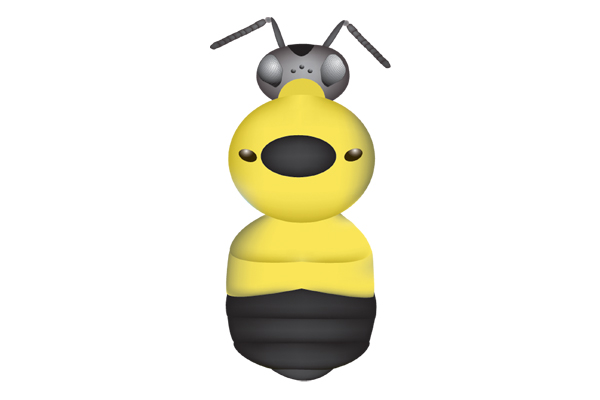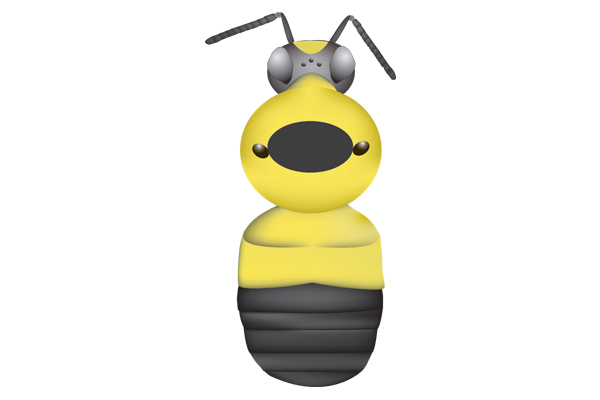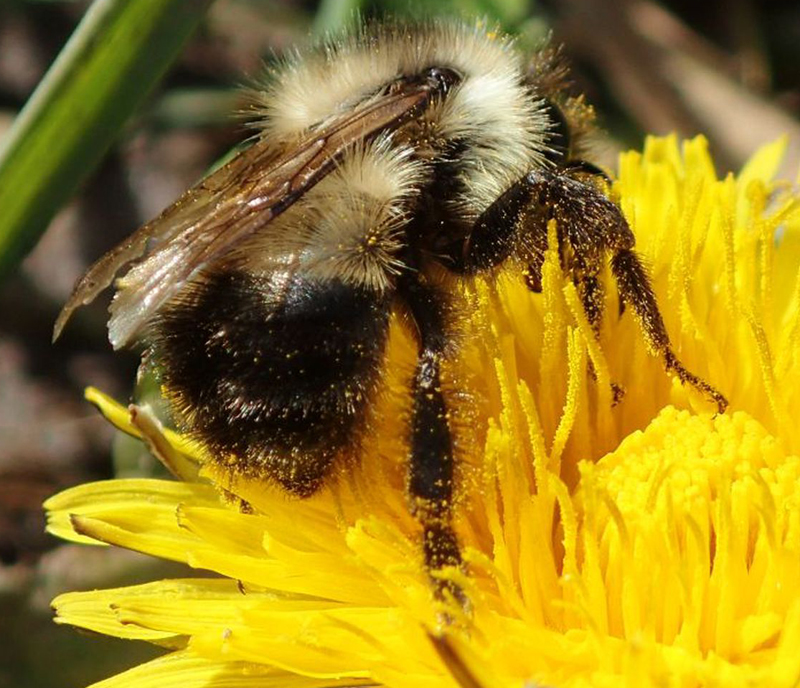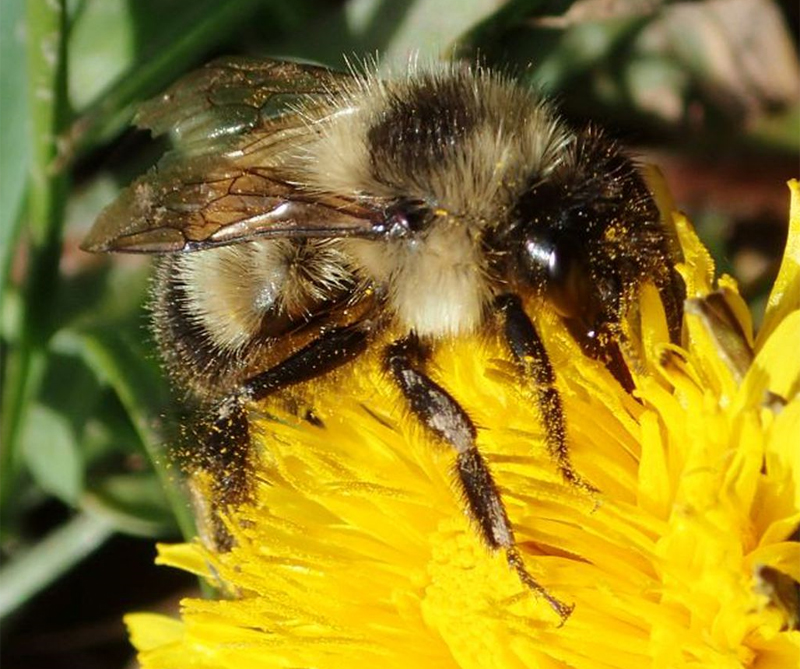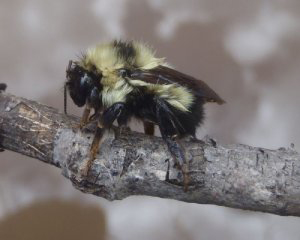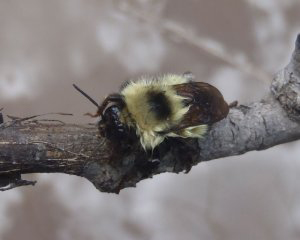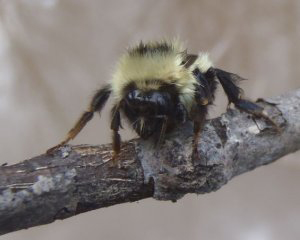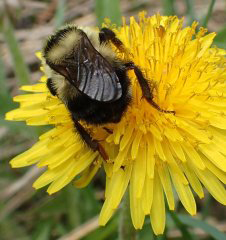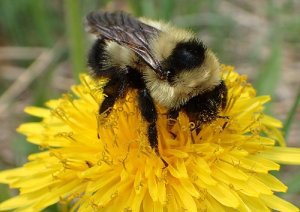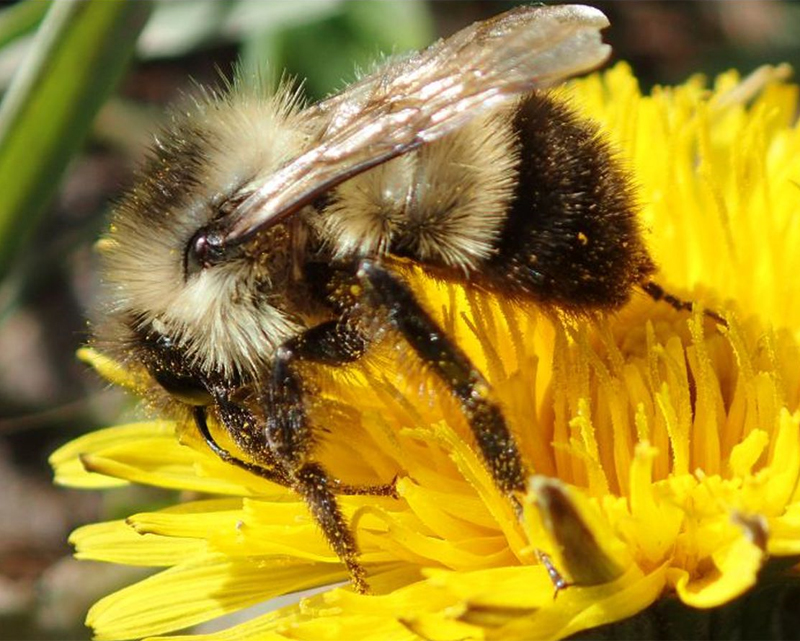
Status-Global/State:
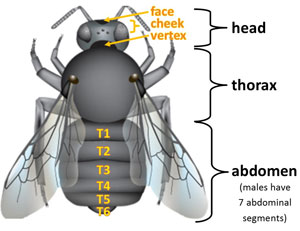
Identification:
- Worker – Face and vertex black or intermixed with yellow. Thorax mostly yellow with black spot or band between the wingpads and sides all yellow. Abdominal segments T1-2 yellow, and T3-T6 black. Some morphs have yellow hairs on T5.
- Queen/gyne – Face and vertex may be yellow, black or intermixed. Thorax mostly yellow with black spot or band between the wingpads and sides all yellow. Abdominal segments T1-2 yellow, and T3-T6 black. Some morphs have white or yellow hairs on T5.
- Male – Face intermixed and vertex yellow. Thorax may have a black spot or band. Abdominal segments T1-2 yellow and T3-T7 black. Some morphs have intermixed hair or fringes on T3, T4 or T5.
- Other distinguishing features – Small bee with a round face and short and even hair. Difficult to distinguish females from half-black bumble bee (B. vagans) and confusing bumble bee (B. perplexus); and males from half-black bumble bee (B. vagans) and redbelted bumble bee (B. rufocinctus).
Similar Wisconsin Species:
This species is difficult to identify. Similar bumble bee species in Wisconsin are twospotted bumble bee (B. bimaculatus), common eastern bumble bee (B. impatiens), frigid bumble bee (B. frigidus), confusing bumble bee (B. perplexus), and half-black bumble bee (B. vagans) (Colla et al. 2011, Williams et al. 2014).
Description of Habitat/Range:
Known habitats include wooded areas (Williams et al. 2014). Nests have been found mostly underground (Colla et al. 2011, Williams et al. 2014).
Nectar Plants
The Sanderson's bumble bee is a short-tongued species (Williams et al. 2014). Nectar plants include Cimicifuga, Epilobium, Kalmia, Lonicera (honeysuckles), Lyonia, Malus (apples), Melilotus (sweet clover), Monarda (bee balms), Penstemon (beard tongues), Rubus (blackberry), and Vaccinium (blueberry) (Williams et al. 2014, Colla et al. 2011).
Data from verified B3 observations [updated 2/28/2024].
Flight Season:
In Wisconsin, the few observation records are mostly from August. Range-wide, queens start emerging in May and enter diapause in July (Colla et al. 2011).
Literature Cited:
Colla, S., Richardson, L. and Williams, P. (2011) Bumble Bees of the Eastern United States. A product of the USDA Forest Service and the Pollinator Partnership with funding from the National Fish and Wildlife Foundation.
Hatfield, R., Jepsen, S., Thorp, R., Richardson, L. & Colla, S. 2015. Bombus sandersoni. The IUCN Red List of Threatened Species 2015: e.T44937931A46440296.
Williams, P.H., Thorp, R.W., Richardson, L.L. and Colla, S.R. (2014) The Bumble bees of North America: An Identification guide. Princeton University Press, Princeton.
